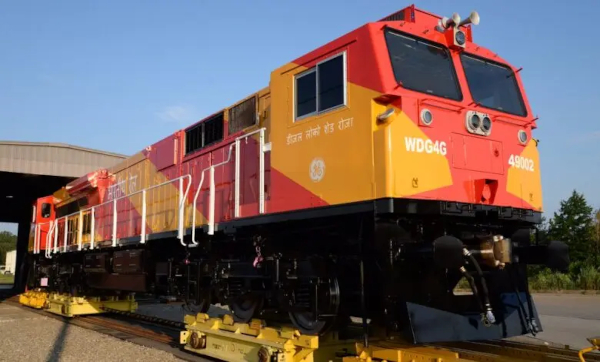India is trying to grow in each sector in the series of Made in India. In the series of this, the Indian railway gets new rails for faster trains, and to help the Indian railway in this sector, SAIL (steel authority of India) has dispatched the first batch of special R 260-grade vanadium alloyed rails. In a statement issued by the steel authority of Indian limited, the first consignment has been sent out through rake from the firm’s Bhilai steel plant, which is located in the state of Chhattisgarh. The special R 260-grade vanadium alloyed rail is targeted to meet the requirements of the national transporter for higher speed and higher axel load.
This is a first-of-its-kind project, which is being implemented with the guidance of NITI Ayog, is expected to see private sector investment of around Rs. 30,000 crore. In line with this thought, Indian Railways had last year started India’s first “private passenger train” on the Delhi-Lucknow route by IRCTC. The private trains, designed for a maximum speed of 160 kmph, will result in a significant reduction in travel time for the passengers, hopes Indian Railways. The run time of the train will be similar to the fastest Indian Railway train.
Indian Railway Minister Mr. Piyush Goyal is leaving no stone unturned to take Indian Railway to the new heights. He has led Indian Railways to move towards higher speed as well as higher axle load rails for which the national transporter required the state-owned company to produce R 260 grade. This particular thing will allow the national transporter to withstand more rigorous sail traffic as well as achieve a better life. This model is rolled by SAIL-BSP, the new grade of rails is based on R 260-grade specifications issued by the research and Development wing of Indian Railways (RDSO).
According to the report given by the Financial Express, the R 260 grades specification issued by the RDSO is more stringent compared to the European specification on various parameters. One such parameter is that in steel, the hydrogen content is 1.6ppm (maximum), while the hydrogen content is 2.5 ppm (maximum) that is specified in the European specification. As per the Chairman of SAIL Anil Kumar Chaudhary, rails would get higher yield strength with this Vanadium micro-alloyed steel which will provide better mechanical properties.
Source: The Policy Times
Image Courtesy: Metro Rail News
You may also like
-
Trade Connect E-platform For Exports Is Single Window, Fast, Accessible And Transformational: Shri Piyush Goyal
-
Dot Simplifies Approval Processes For Telecom Licenses And Wireless Equipment
-
Coal Production and Supply Trends on Positive Trajectory
-
Union Minister To Release Booklets On Promotion Of Indigenous Species & Conservation Of States Fishes
-
2nd India-Japan Finance Dialogue held in Tokyo on 6th September, 2024
